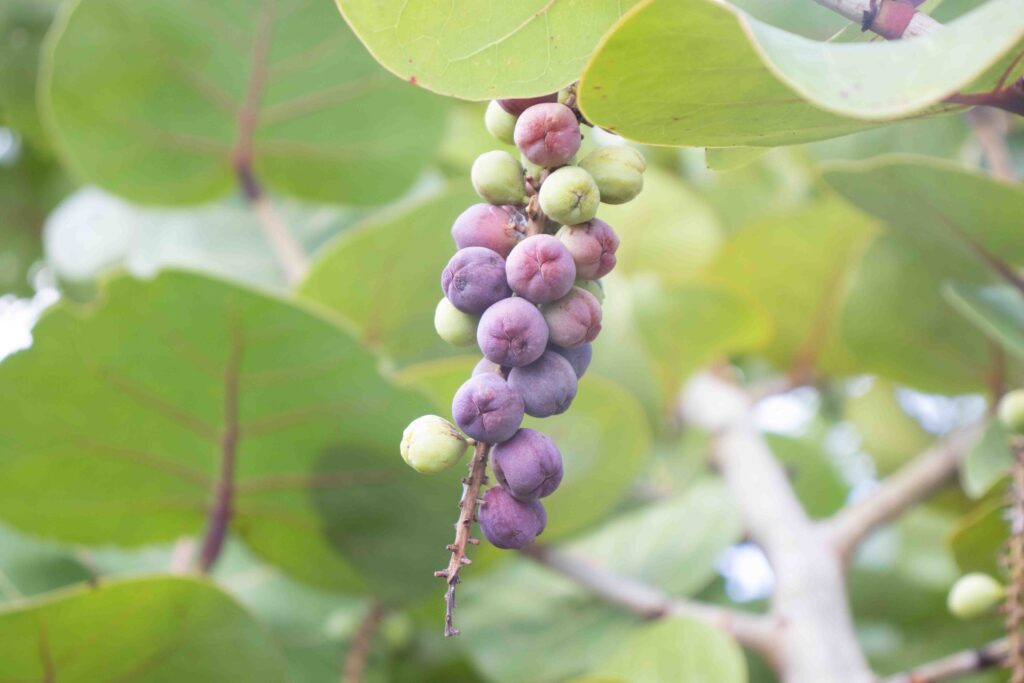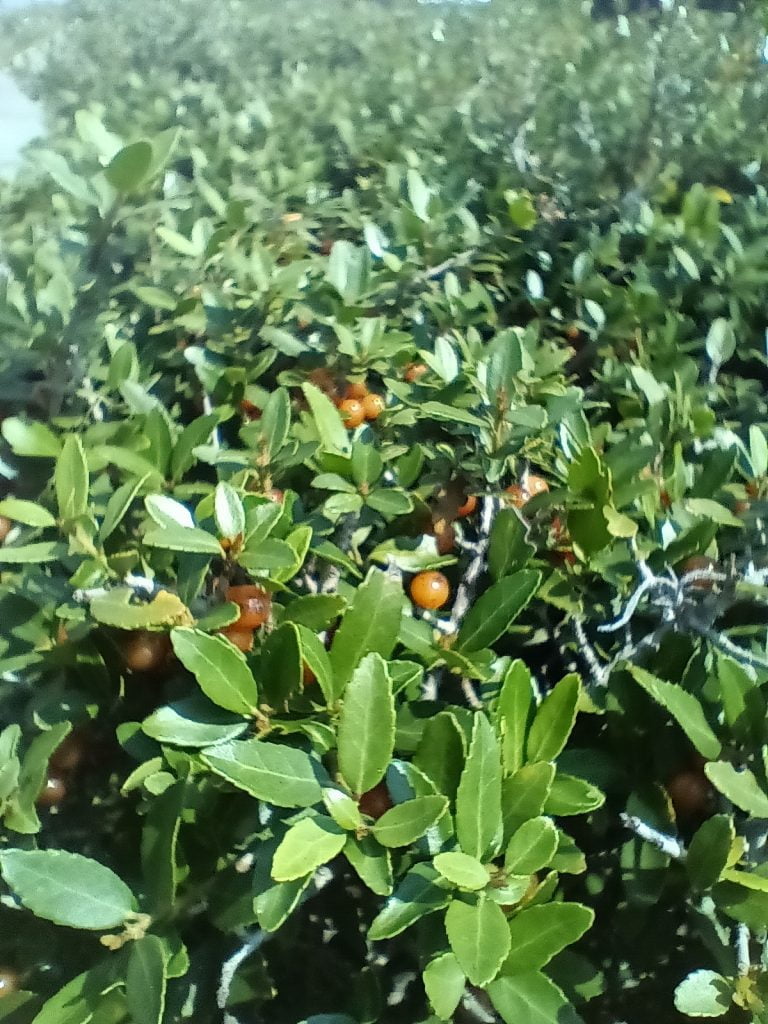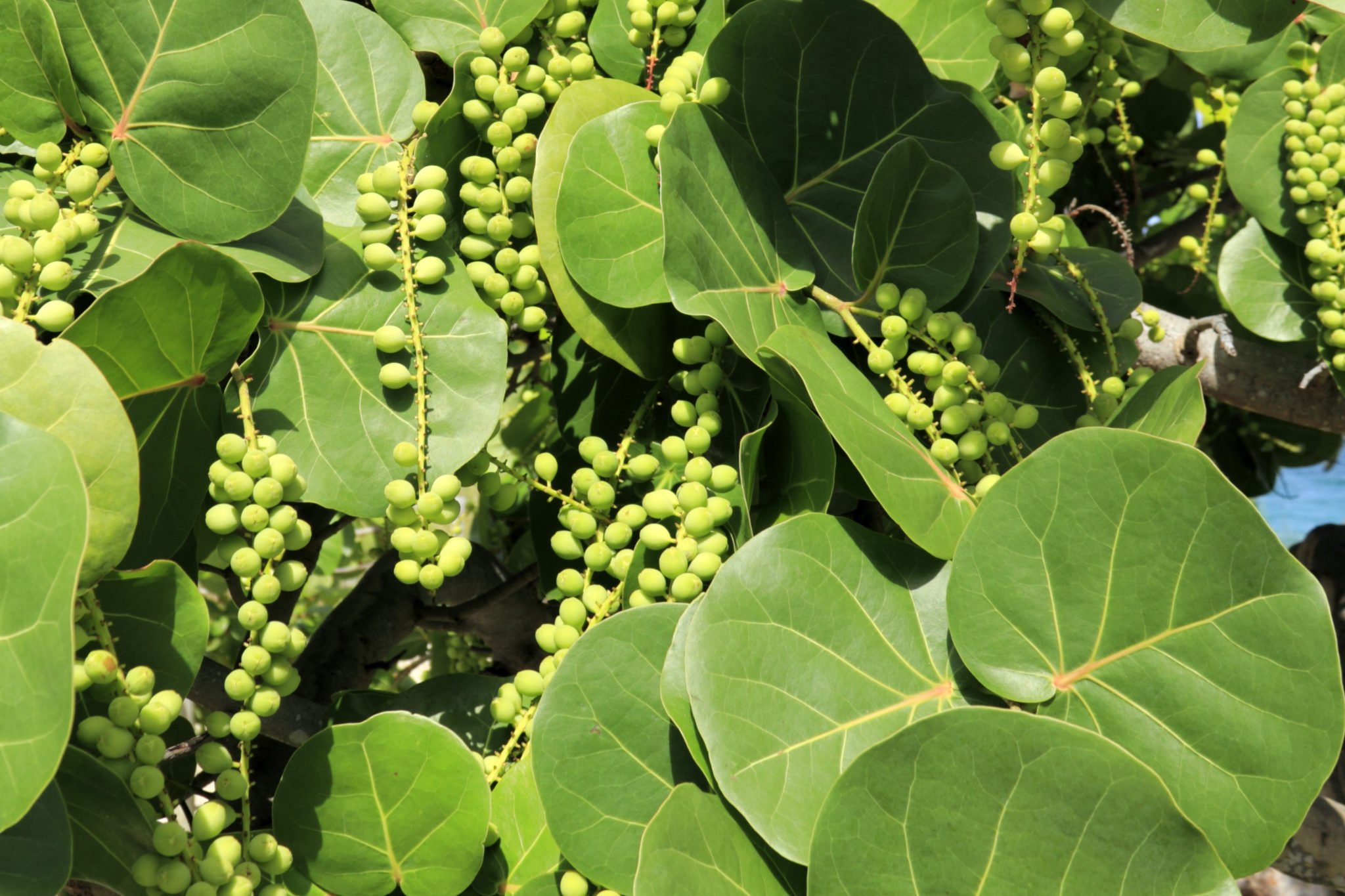When envisioning the coastal landscapes of the Florida Coastline, one might conjure images of sweeping dunes, sea oats swaying with the breeze, and the iconic Sea Grapes (Coccoloba uvifera), with their wide, glossy leaves and clusters of ripening fruit. While they might not be the first choice for a traditional butterfly garden, integrating Sea Grapes into Florida’s coastal landscapes offers multiple benefits.

Here’s a dive into the many ways Sea Grapes enhance butterfly gardens throughout Florida and the Caribbean.
1. Stabilizing Coastal Soils:
Sea Grapes have deep, sprawling root systems that are adept at holding sandy coastal soils in place. By preventing erosion, they ensure a stable habitat for both plants and animals. This ecological service is particularly vital in butterfly gardens, where consistent soil health is required for sustaining a variety of nectar and host plants.
2. Providing Shelter and Shade:
The large, leathery leaves of the Sea Grape offer ample shade, protecting the more delicate plants in the garden from the intense coastal sun. This shade also creates microclimates, little pockets of cooler, more humid conditions, which many butterflies and their larvae often seek out to rest or lay eggs.

20 Florida-Native “Black Drink Holly” Seeds (Ilex nigrempotum) formerly “Yaupon”
20 or more seeds of the Florida-native, Black Drink Holly (Ilex nigrempotum), formerly known as “Yaupon.” Origin: Polk Co. FL Zone 9b.
